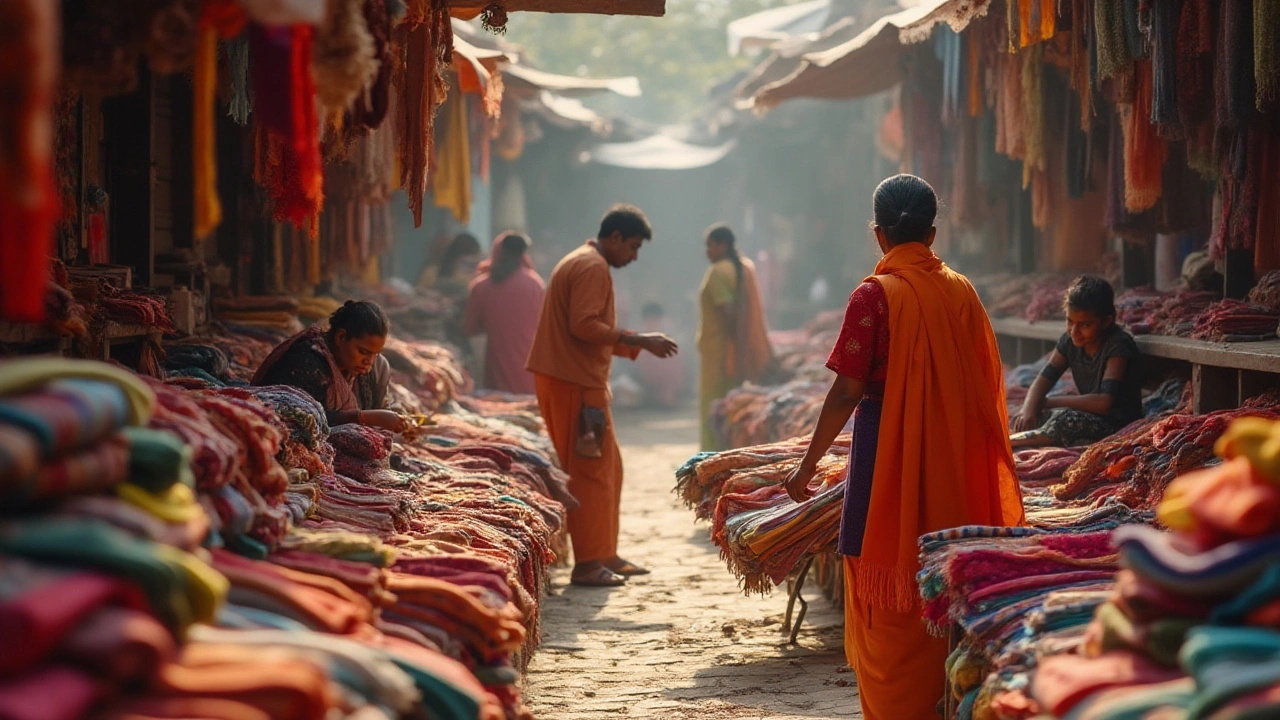India Textile Manufacturers: What You Need to Know
If you’re hunting for a textile partner in India, you’ve landed at the right spot. The country hosts thousands of manufacturers who spin, weave, dye, and finish fabrics for everything from budget tees to luxury silk. Below we break down the main hubs, the kinds of products you’ll find, and how to pick a supplier who delivers on quality and timing.
Where the Biggest Textile Hubs Are
Surat in Gujarat tops the list as the fabric capital of India. It’s famous for synthetic fibres, polyester blends, and high‑speed weaving. The city’s supply chain is tight – raw yarn, chemicals, and machinery are all nearby, which keeps lead times short.
Tirupur in Tamil Nadu is the go‑to place for knitwear. Over 10,000 factories churn out cotton T‑shirts, sportswear, and activewear for global brands. If you need a quick turnaround on cotton garments, Tirupur’s network of dyeing and finishing units can shave weeks off your schedule.
Ahmedabad and Ludhiana also deserve a mention. Ahmedabad specializes in denim, shirting, and traditional handloom fabrics, while Ludhiana is a major player in wool and blended fabrics for innerwear. Each hub has its own niche, so match your product needs to the city’s strengths.
Choosing the Right Manufacturer
Start with a clear spec sheet. List fabric weight, GSM, colour, finishing touches, and any certification you need (e.g., ISO 9001 or Oeko‑Tex). A detailed brief cuts down back‑and‑forth and shows the factory you mean business.
Ask for sample runs before committing to bulk orders. A small batch lets you test colour fastness, shrinkage, and seam strength. Most reputable Indian manufacturers will provide a pre‑production sample at a nominal cost.
Check the factory’s compliance record. Look for certifications, recent audits, and worker safety standards. Many Indian mills now follow the Government’s “Make in India” scheme, which encourages modern equipment and better labor practices.
Price is important, but don’t let it be the only factor. Compare total landed cost – that includes freight, customs duties, and any inland transport from the port to your warehouse. A slightly higher per‑meter price can be offset by lower shipping or faster delivery.
Lastly, build a relationship. Regular video calls, site visits, and transparent communication go a long way. Factories that feel valued tend to prioritize your orders and give you early warnings if anything changes.
India’s textile sector is booming, and the mix of small family‑run looms and large, tech‑driven plants gives you a lot of flexibility. Whether you’re a startup needing a short‑run prototype or a global brand looking for millions of metres, the country’s manufacturers can meet the demand – you just need to know where to look and what questions to ask.

Exploring India's Queen of Textiles: A Deep Dive into Textile Manufacturing
India has long been recognized as a hub for textile manufacturing, a crown attributed to the skill and craftsmanship woven into every piece of fabric. Often hailed as the 'Queen of Textiles', this country's rich history and strategic innovations have solidified its status globally. Discover the pivotal role played by textile manufacturing in India's economy, the influential figures in this industry, and the unique textiles produced here. Gain insights into why India remains a powerhouse shaping the global textile landscape.
Read More